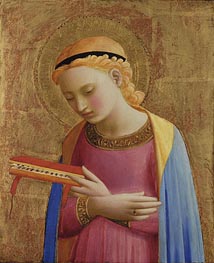
(Guido di Pietro) Fra Angelico Giclée Fine Art Prints
c.1395-1455
Italian Early Renaissance Painter
2 Fra Angelico Artworks
SKU: 9686-FRA
(Guido di Pietro) Fra Angelico
Original Size:33 x 27 cm
Detroit Institute of Arts, Michigan, USA
(Guido di Pietro) Fra Angelico
Original Size:33 x 27 cm
Detroit Institute of Arts, Michigan, USA
SKU: 9685-FRA
(Guido di Pietro) Fra Angelico
Original Size:33 x 27 cm
Detroit Institute of Arts, Michigan, USA
(Guido di Pietro) Fra Angelico
Original Size:33 x 27 cm
Detroit Institute of Arts, Michigan, USA

